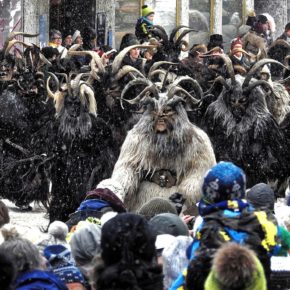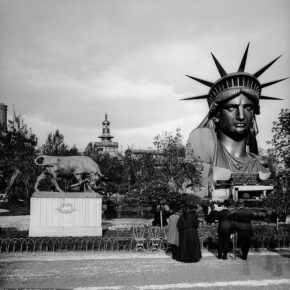In a little more than one week, hundreds of road cyclists will take on Mountains of Misery, a challenging 102 or 126 mile ride through the Blue Ridge Mountains of southwestern Virginia. These cyclists are in for a true challenge, with 10,000 feet of climbing over the 102 mile course (13,000+ on the double metric, which I won’t address past this bit), much of it coming from two monster climbs. It’s one of the best cycling challenges in the east.
For most of these cyclists, training for the big event has been taking place for months: racking up the miles, working on climbing form and endurance. And that’s all well and good, but what about the weekend of the event? That’s where I want to share my advice as a veteran of this ride.
The week leading into Mountains of Misery:
- Tapering. After this coming weekend (and, indeed, during the weekend for most), you’ll want to taper off your preparation work. This means reeling in the tendency to hammer on the climbs, drive a mean paceline on the flats, and so forth. Rides during this coming weekend should be long, but not terribly long, and need not be chock-a-block full of big climbs. Work on a smooth pedal stroke and keeping the heart rate well below maximum. Basically: you don’t want to drain your energy resources now; on the contrary, you want to start building them for the big event. Any mid-week rides should be taken at a moderate tempo, so let the folks who aren’t riding MoM contest the town line sprint. Do ride – just not to excess.
- Nutrition. The week before the event is a great time to make sure your engine is primed for the effort. That means eating quality food: a balance of protein and carbohydrate, with a minimum of processed ingredients and refined sugars. This doesn’t mean you need to “carb load,” as this is more likely to slow you down on event day (though it’s OK to up the carbs a touch the afternoon/evening before the event). Eat a lot of whole grains, in-season fruits and vegetables, lean protein (possibly the most important part of fueling) and antioxidants. Taper off the caffeine and alcohol intake a bit. Drink a lot of water! And be sure to have a great breakfast every day of the week.
- Bicycle Mechanics. If your bike needs new brake pads, cables, chain, cassette, tires or bar tape, the week before the event is a great time to do these things, especially if you are like me and do most of your own wrenching. On a hilly ride in a really rural area, you don’t want any part of your bike to fail, so preventive maintenance is key. I plan on changing out my front brake pads, bar tape and tires before the big event. Bring a spare tire, pump and tubes with you to the event – you’ll want to carry a spare tube with you on the ride, anyway. Clean and lube your drivetrain (and, if you have the time, wash your whole bike).
- Sleep. Gearing up for a big event means storing energy, which also means getting a good night’s sleep. If you’re eating well and riding an easy-going week, getting sleep shouldn’t be too difficult.
- Clothing, Etc. Make sure you do your cycling-related laundry early in the week and keep an eye on the weather for the event weekend. That way, you’ll have all of your kit ready for any eventuality. I’ve been on MoM rides when it’s been chilly and raining, hot and brutal, and everything in between. Set out a favorite jersey (or two), some shorts you know will be comfortable on a long ride, socks, arm and leg warmers and other bits and bats (e.g. headband). Check your bike gloves and helmet for wear and tear, and wash or replace if needed. (Washing a bike helmet is easy: take it with you into the shower!) Check your bike shoes and their cleats: if the cleats are loose, tighten them, and if they’re worn out, get new ones.
The evening before the event:
- The Drive to Blacksburg Get there in the late afternoon or early evening, and plan some delay in the drive. Stressing out over the drive doesn’t help. If you can, drive with others and share the workload.
- Dinner. Eat something that you are familiar with and has a nice balance of protein and carbs. Eat some fresh greens. But don’t wolf down a meal like it’s your last one ever, because it might disturb your sleep and drain energy stores.
The Day of the Event:
- Breakfast. Eat something familiar, simple and filling. Again, try to balance protein and carbs. Make sure you get some salt and other electrolytes. Fresh fruit, oatmeal/cereal, eggs, juice, coffee/tea and water all make a great breakfast. Make sure you can take your time eating it, and finish eating at least an hour before ride start time.
- Newport Rec Center. Get there early! Drive there (there’s no easy way to ride there from Blacksburg: big climb, busy road). And use the port-o-lets early, too.
- Bag For The Finish. Send a small duffle/drawstring bag of stuff up to the finish: a change of clothes, towel, wet wipes, deodorant, hair brush, sunscreen, camera, recovery drink powder, etc. – it will all be handed to you as soon as you cross the finish.
- Starting Waves. The first wave is full of alpha dogs who treat the ride like a race, so only go with them if you are prepared to ride fast and furious. Otherwise, fall into a later wave – you all end up at the same place in the end.
- Pacing: Part 1. The first 56-or-so miles of the 102 mile route are rolling hills, so pacelines are bound to develop. Make sure that you take your turn at the front, but don’t go for too long, or at full effort, when taking your pull: maybe 100-110 pedal strokes, then fall back. If you stay up front for too long, you’ll blow all your energy early on, which isn’t smart. If you go too hard, you’ll also blow up early. If the paceline you’re in is too fast for comfort, let it go, because you’ll need the energy for the climbs. There is one steep descent at mile 27, and it’s best to let the confident descenders take the lead on this.
- Rest Stops. There are rest stops all along the ride route. I try to wait to stop until the top of the first major climb at Johns Creek (mile 62), but that’s often too much for many. Stop when you must, but don’t linger for long and let your muscles and cardiovascular system cool down.
- Refueling. MoM supplies some great food and fluids at their rest stops. They have water, soda, fruit, cookies, sandwiches, energy gels, and both Gatorade and Hammer HEED (the latter being my fave). However, if you are conditioned to a specific product (e.g. GU2O, Endurox or Accelerade), bring your own powder with you – an event is not the time to try something new. And be sure to have some snacks with you on the bike, just in case.
- Pacing: Part 2. The climb to Johns Creek is steep and tough: 2.8 miles and 1,100 feet of vertical, top pitch around 19%. Pace yourself up the climb, saving some “oomph” for the top. The rest stop at the top is a great place to refuel. After this, there is a nice descent, then some rolling road before the…
- Lollipop Loop. This loop is all about rollers, some very steep, between miles 72 and 85. Save some energy for these, as it’s essentially a lot of interval riding for the middle 8 miles. Some of the curves are sharp and can have gravel in them, and potholes are a norm – be careful!
- Last Rest Stop. The last practical rest stop is at mile 95, not long before the big, final climb. This is a great place to top off the water bottles, use the loo, take in some last bits of solid food and affix the number to your bike frame (this is used to reclaim your bike back in Newport after the event – they take it back to the start on a truck).
- The FINAL Climb. This is the big one: up Doe Creek Road to Mountain Lake. It’s long (4.1 miles) and steep (1,800+ feet of climbing, topping out at 17%). Pace yourself, as before. Spin, if you can. Stand to relieve boredom and engage other muscles. Take advantage of the rest area 2/3 of the way up by having them hand you cups of water, as well as having them dump some water over your head or onto your back (the cooling provides an instant energy boost right before the steepest pitch of the climb). Keep going – don’t stop at this rest stop, just roll through it and let the volunteers help you!
- The Finish. The finish area is like that of a Grand Tour: people lined alongside, cheering you on; the MC announcing your name as you arrive; and a big, overhead banner. If you have the energy, give the final 200-250 meters your all and DRIVE through the finish. Once you cross, volunteers will steady you and take your bike from you, ask which wave you started with (used to calculate time), hand you your finisher’s shirt and your bag.
- Relax! Get cleaned up and changed. Drink your recovery drink. Eat some grilled burgers. Get a massage (highly recommended, especially if you plan on driving back home that night). Reflect on the task you just achieved.
Good luck!
ETA: I’ve added some bits remembered on a subsequent read. And thanks for all the feedback, guys!















Matt B.
20 May 2011 — 19:43
Thanks Rudi. Much appreciated.
Robert Lee Hammond
2 January 2015 — 21:07
I really enjoyed reading the ‘MoM Primer’. This will help me prepare even more for this epic ride. I was a volunteer last year May 2014. My friend from Pennsylvania did it last year and I tried to talk him out of it in the beginning. I ended up transformed based on inspiration and things I witnessed. Incredible stuff. Thanks!
Lee
Clara
23 May 2017 — 20:00
Thank you! This will be my third time but I forget. That’s why I am registered again. Good reminders.
Clara